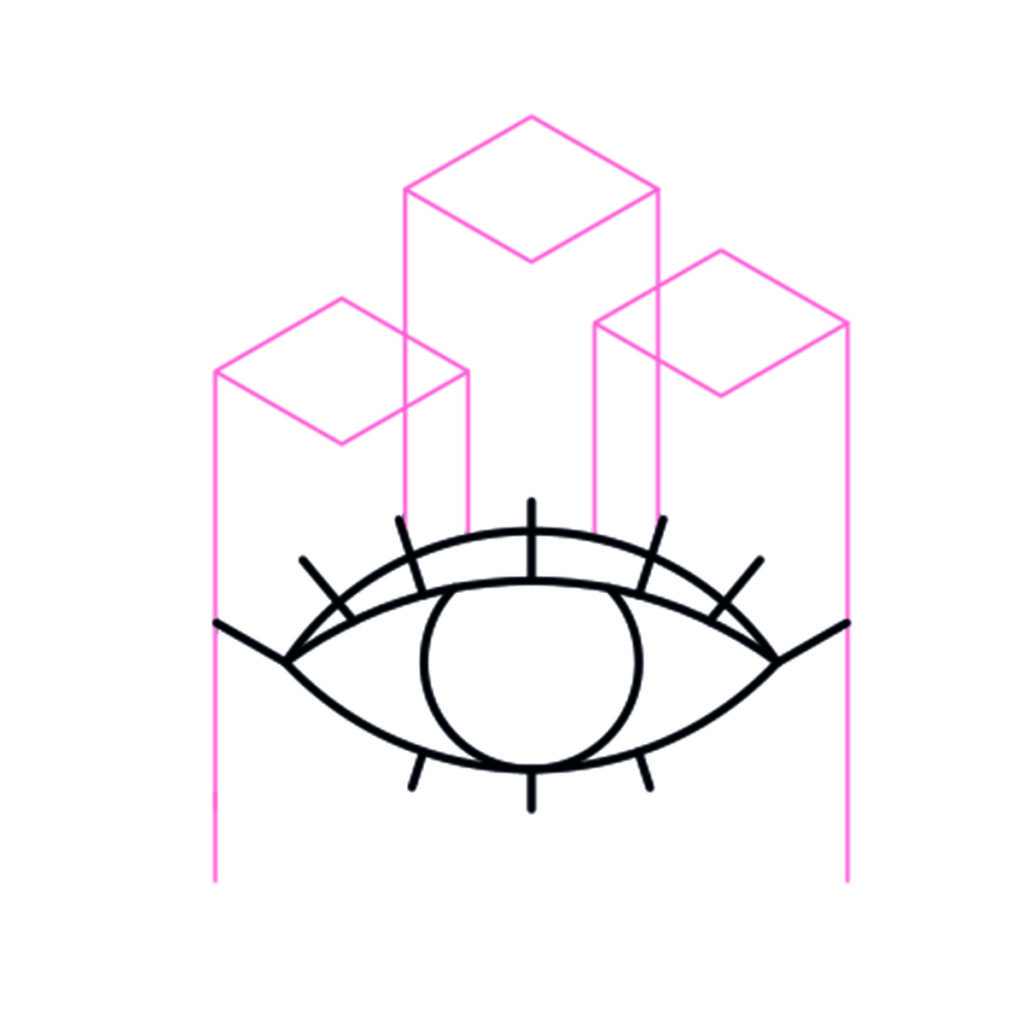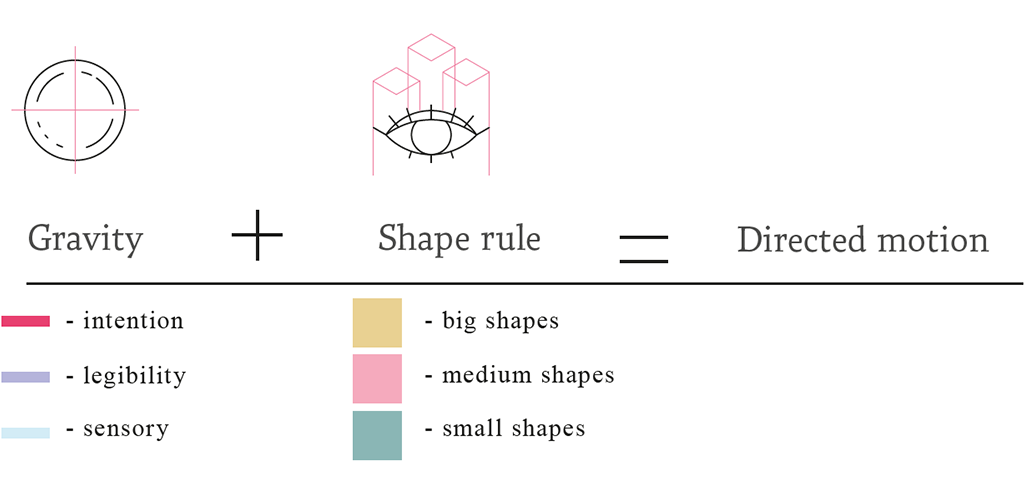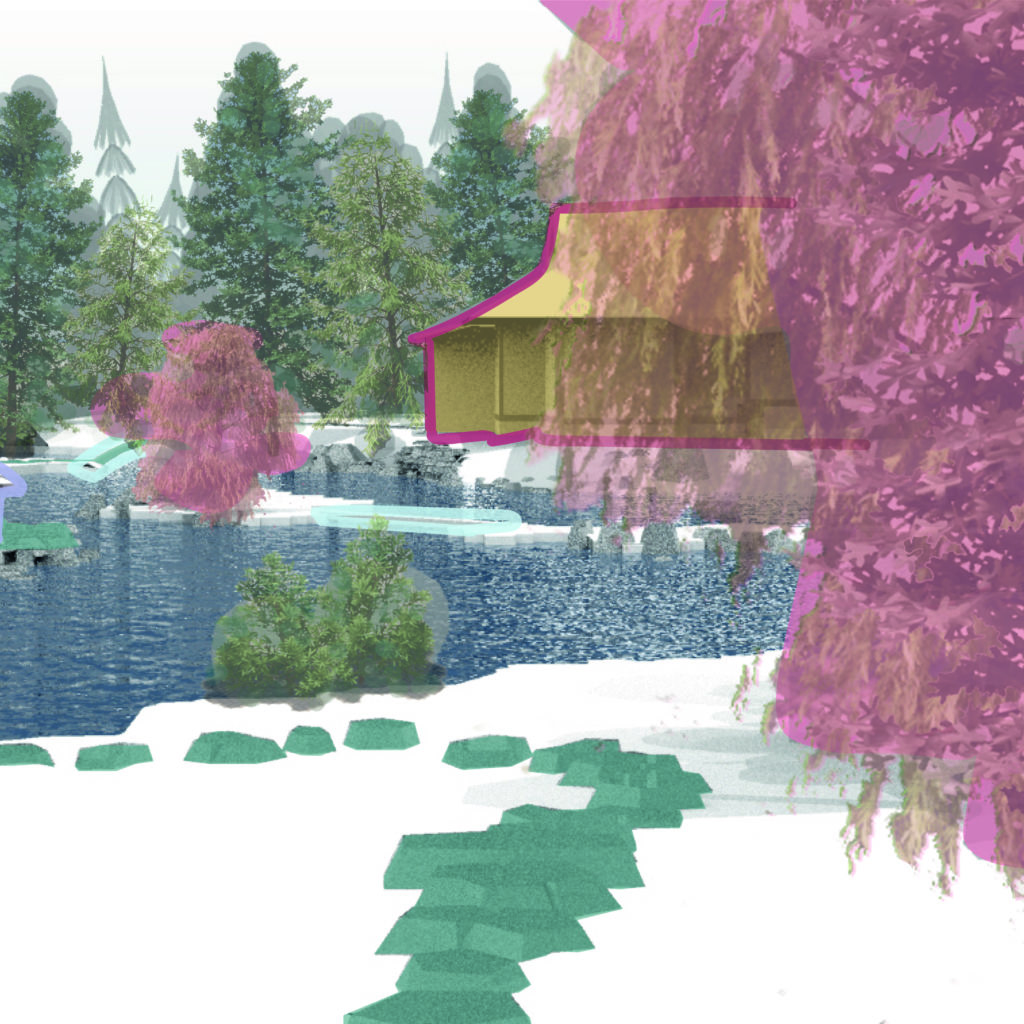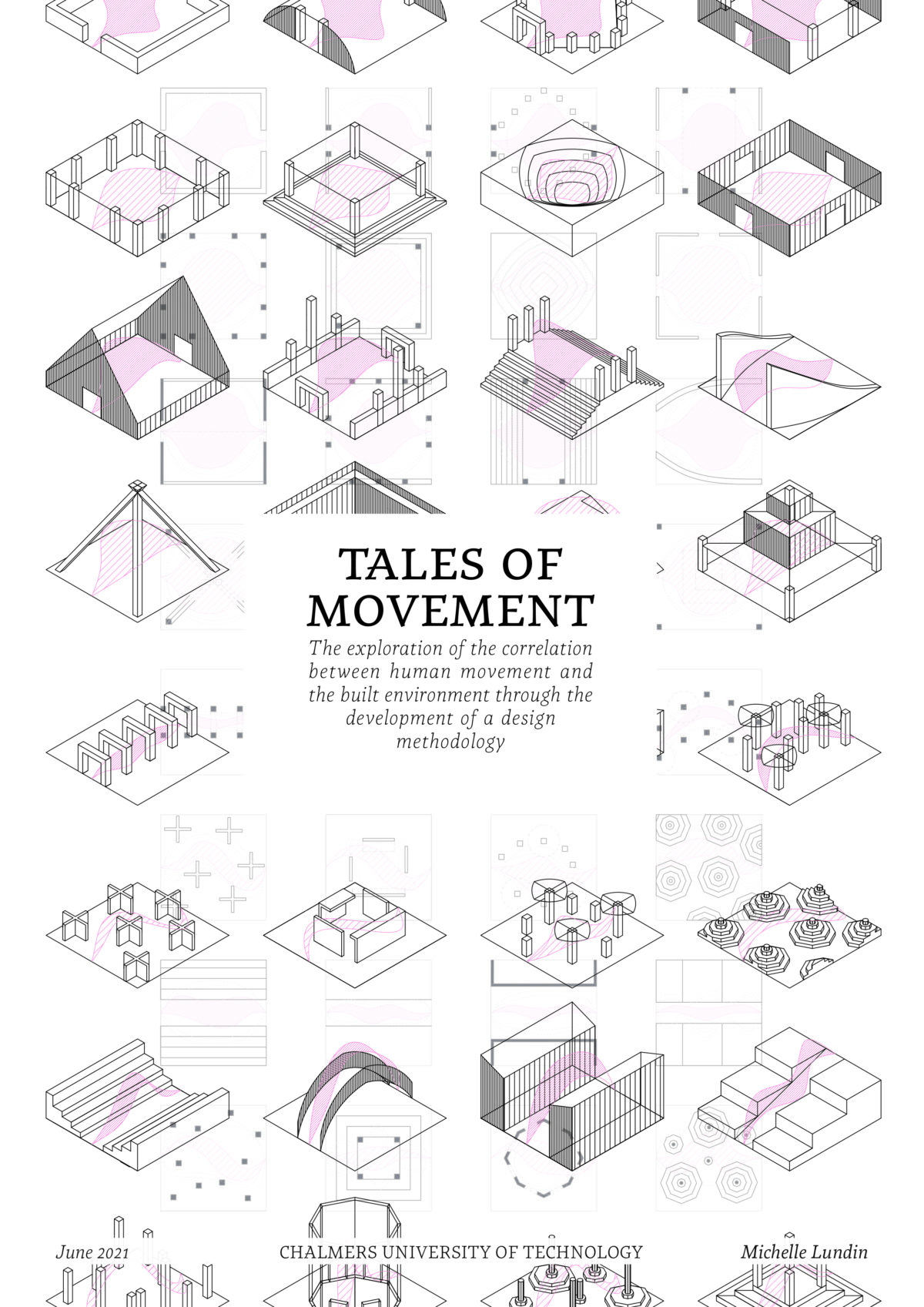

Alluring shapes
This chapter looks closer at how two specific design strategies in a certain video game can direct movement. It focuses on how different sized extrusions and clearings interact with attraction points, so called objectives, that hold different gravity to the visitors and furthermore, how this interplay affects and directs the movement.
What makes the design strategies used in Zelda: Breath of the Wild interesting for this thesis is in the way the developers successfully create movement in an open world without ever making the player feel forced to move a set path. Albeit real life is not a video game, it is interesting to consider how similar successful architecture in our world also direct the visitor by using light, extrusions and objectives. Versions of the design strategies in Zelda: Breath of the Wild are therefore iterated and applied to a real-life example.
Shokin-tei Tea House lies in the garden of the Imperial Villa Katsura in Kyoto and is the subject of analysis. Like the strategies in game, the way you obscure and reveal objectives as you move along a path is similar to how you would approach a sacred place in a traditional Japanese context. Tea houses are good examples of where the journey is crucial for the experience. You move along a directed path from the outside world in to a sacred place. The emphasis is put on the transition between opposites which in this case is the tension field between inside and outside.


